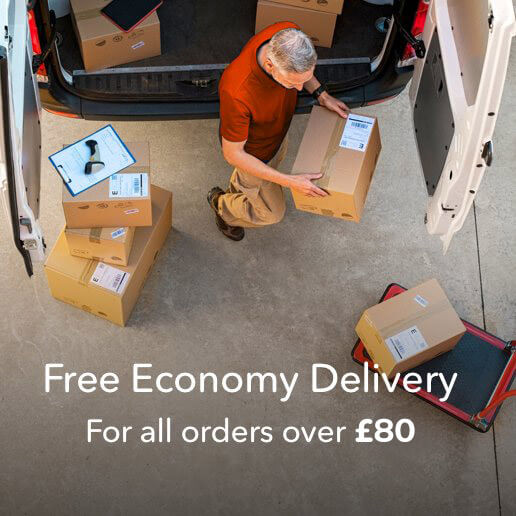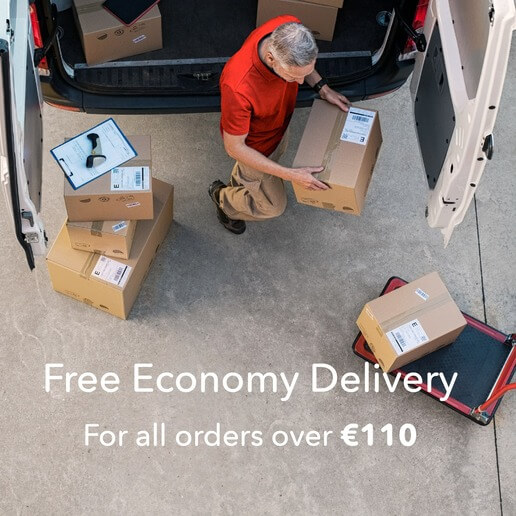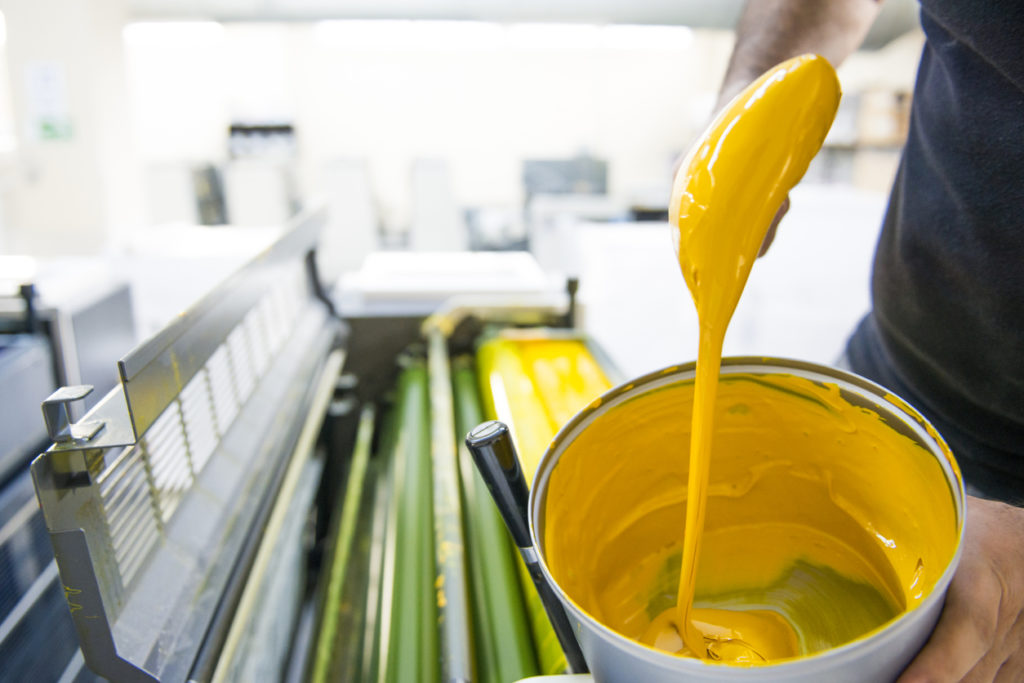The Difference between Digital and Litho « Back to list
Have you ever wondered about the differences between digital printing and litho printing? Well, you’ve come to the right place. In this post, we’ll teach you everything you need to know about digital printing and litho printing by answering a list of frequently asked questions on printing inks, spot colours, paper weights and so much more! After reading the information below, you’ll have a better understanding of the strengths and weaknesses of each printing type. This will enable you to choose the optimal printing process to suit your specific requirements… but what printing method will you go for?
What ink is used in digital and litho printing presses?
Both digital and litho create images using the standard four-colour printing process of Cyan, Magenta, Yellow and Black (CMYK for short). However, each printing method requires a different type of ink. Knowing the key differences between the two will help you decide which process is right for your print job:
- Litho presses use a thick, tacky, wet ink paste, meaning your print must be left to dry before it can be finished. Additional processes can be added to speed up the drying time, but with litho printing, your job will not be finished straight after printing.
- HP Indigo Digital Presses use Electroink which is a unique liquid ink that combines the advantages of digital printing with the qualities of liquid ink. With it, prints are ready to be finished immediately, allowing for faster turnaround and delivery times.
Are any special inks available for digital or litho printing?
Wherein litho printing metallic and fluorescent inks are frequently used, they are not commonplace in digital printing. Here at Digital Printing, on the other hand, we now offer a much wider gamut of available coloured inks, perfect for pairing with branded materials, themed events and so on – it really is the perfect printing solution for promotional materials.
How does litho and digital printing cope with spot colours?
Spot colours are ideal when colour accuracy and consistency across print jobs is crucial. See below how litho and digital printing can help you match spot colours:
- Traditionally, litho printing used specifically mixed Pantone coloured inks to match the Pantone colour chart. In most cases, you will pay more per ink if you want to use Pantone coloured inks instead of CMYK.
- Due to advancements in digital printing technology, vast improvements in Pantone colour reproduction have been realised using the standard four-colour printing process. With our HP Indigo Electroink, we’ll be able to match a vast number of colours accurately – we’re sure you’ll love the results!
Are litho and digital printing difficult to set up?
Digital printing requires minimal setup, whereas litho presses have a setup period where the printing plates need to be made from the print file. Listed below are the set-up processes for both litho and digital printing:
- In litho printing, your designs must first be made into printing plates before being transferred to paper, with a minimum of four plates required for traditional four colour presses. The ink is then picked up by the plate and sent to the printing blanket where it is subsequently transferred onto paper. Depending on the size of your job, you may require more than one plate per colour, and multiple plates will incur extra costs, making small to medium print runs an expensive option when litho printing.
- Digital printing, on the other hand, requires no such setup. Print-ready files are sent directly and digitally to the press, and artwork is written line by line, meaning that each page can have a unique design if required – perfect for small to medium print runs, and much cheaper too!
Are paper weights and substrates different in litho and digital printing?
The following is a list of the differences between litho and digital printing in terms of paper weights and substrates:
- Litho printing is the old kid on the block, meaning that there are a larger variety of substrates available on a greater range of paper weights – from 60gsm to 500gsm.
Although not as varied, digital printing still offers an impressive selection of substrates to choose from, all of which are tried and tested. Digital printing can accommodate paper weights between 90gsm and 400gsm.
What method offers better print quality? Litho printing or digital printing?
Traditionally, litho printing was said to offer the best print quality around. But the tide is changing, with advancements in technology in digital printing, such as our HP Indigo Electroink – digital printing is now said to offer the same level of quality with faster turnaround times and at a much better price!
What printing method is faster? Litho or digital?
Although litho presses print more A4 sheets per hour than digital presses, their extended setup time can detract from the overall turnaround speed, lending digital printing as the faster printing method – why else would we let you place your orders as late as 12 noon for same-day print?
Is litho printing cheaper than digital printing?
In fact, the opposite is true. Because there is no minimum print run in digital printing, it actually turns out to be the more cost-effective option in that you only print what you need, when you need it. As you need to order larger quantities when litho printing you can incur significant costs. By printing small to medium run batches, you’ll save both time and money… a real win-win!
Which printing method is better for personalisation?
Personalised printing can be a costly affair with litho presses due to their reliance on printing plates. Digital presses, as mentioned, print images on a line by line basis, allowing every sheet to be different when it comes off the press – perfect for invites, place names and much more!
Does digital printing or litho printing have faster turnaround times?
If you need your print in a hurry, think no further than digital printing. Unlike the 3-5 day wait, you can expect with litho printing, with digital printing, we can offer you same day production or express production on a wide variety of products. Need high-quality print the very next day? Don’t worry, we’ve got you sorted.
Which printing method is more environmentally friendly?
Consider digital printing if you want to do your part for the environment. Because digital printing lets you only print what you need, it is considered the more environmentally friendly printing method. Due to the large print runs of litho printing, overproduction can be a real issue, so why risk the waste? Instead, select digital printing to print only what is required, and do your part in saving the planet!
Why choose digital printing?
After having read through our list of the main differences between litho and digital printing, it should be pretty obvious which method we think is superior. In this competitive and busy landscape, the value of time cannot be understated. And with digital printing, fast turnaround times are guaranteed – if you need high-quality print products delivered the very next day, we’ve got you covered! What’s more, due to there being no minimum print run, it is the more cost-effective printing method. We let you print one product at a time to test the waters before making a larger order. This means you can test promotional materials at a fraction of the typical price of making a bulk order.
At DigitalPrinting.co.uk, we offer free delivery on all orders over £75. Plus, we deliver throughout the UK, no matter the location. Visit our website today and get high-quality digital print delivered fast, straight to your front door!



